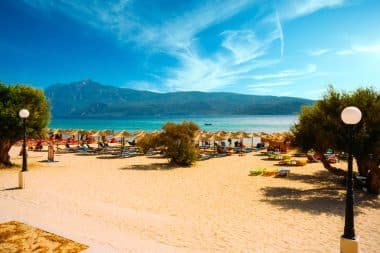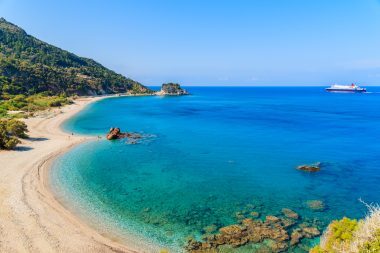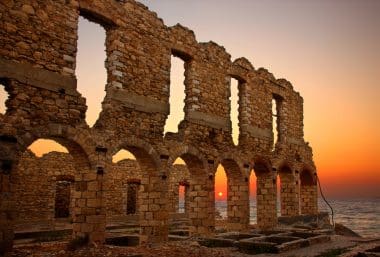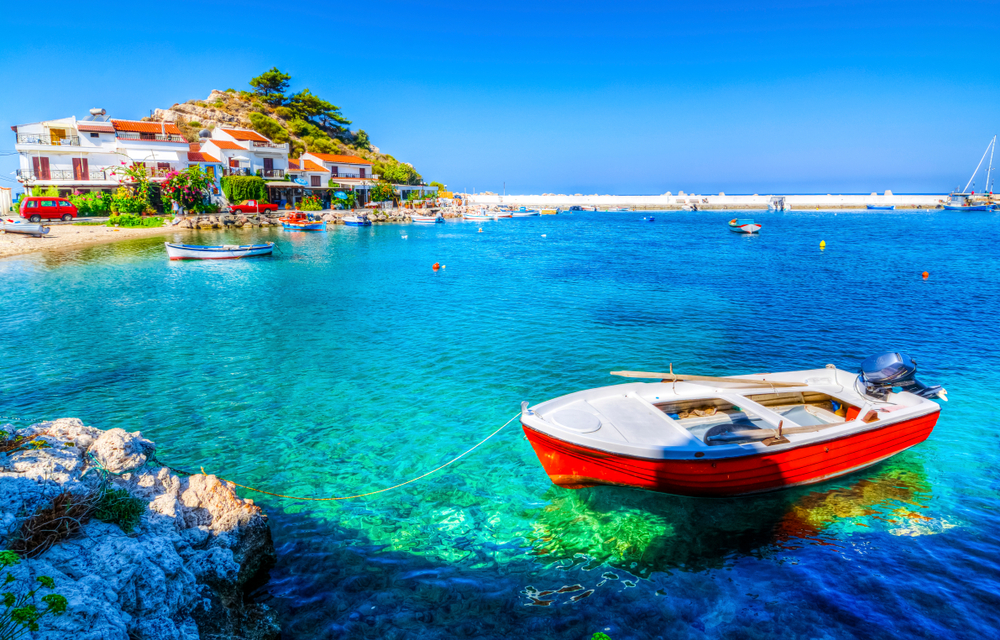When the sun sends its first rays over the island, the haze of the early hour hangs over the waters of Samos. Very soon the outlines of the nearby Turkish mainland become recognizable in the east, and there are said to be people on Samos who have heard the crowing of Turkish roosters when the wind blows favorably. Asia is on the doorstep, but the green island on the periphery of Europe has always been part of ancient Greece in the eastern Aegean. Homer, the earliest poet of the West, is an important witness to this thesis, because he named Samos in the 42nd verse of his hymn to Apollo.
Samos – Beaches, wine and blue bays

The famous Pythagorean theorem
In the hinterland, Samos has largely retained its originality. With the whisper of the shady mighty plane trees, the sweet scent of the vines and the spicy breath that wafts over from the atmospheric spruce groves. “The most beautiful thing is harmony,” Pythagoras, the greatest son of the island of Samos, dictated to his students in their textbooks. He was probably inspired by the loveliness of this landscape, which the restless wanderer considered his home throughout his life. He was a philosopher and mathematician and gave generations of students sleepless nights with his famous “Satz”. But Pythagoras solved a fundamental problem of mathematical philosophy with his knowledge of the square of the hypotenuse.
A monument for eternity
The pretty small town of Pythagorio on the bay of Tigani erected a monument to Pythagoras for eternity with this name. In 1955, the village was renamed. The once tranquil fishing port has changed in recent years and attracts young people among the holidaymakers in particular with its hits blaring from the loudspeakers of the bars. The only evidence of the splendour and decay of an ancient metropolis is the remains of the city wall. Archaeologists have been puzzling over Pythagorio for a long time where the legendary Acropolis once stood. Instead, the Metamorphosis Church not far from the castle hill, which was commissioned by the Greek freedom fighter Lykourgos Logothetis in 1824, is worth seeing.
The ingenious tunnel of Eupalinos

Samos – an Eldorado for hikers

The romantic “Valley of the Nightingales”
The most beautiful beaches on the island are located on the southwest coast, at the foot of the 1,425-meter-high Kerketeus. At Psili Ammos and Ormos Marathokambos, fine sandy sections lead into a mostly weakly moving sea. Easy to reach from the tourist strongholds are the stony bays between the lively metropolis of Samos Town and Avlakia. The bathing bay below Kokkari is particularly picturesque. The best wine thrives in the mild climate of breezy Platanos with its romantic “Valley of the Nightingales”.


